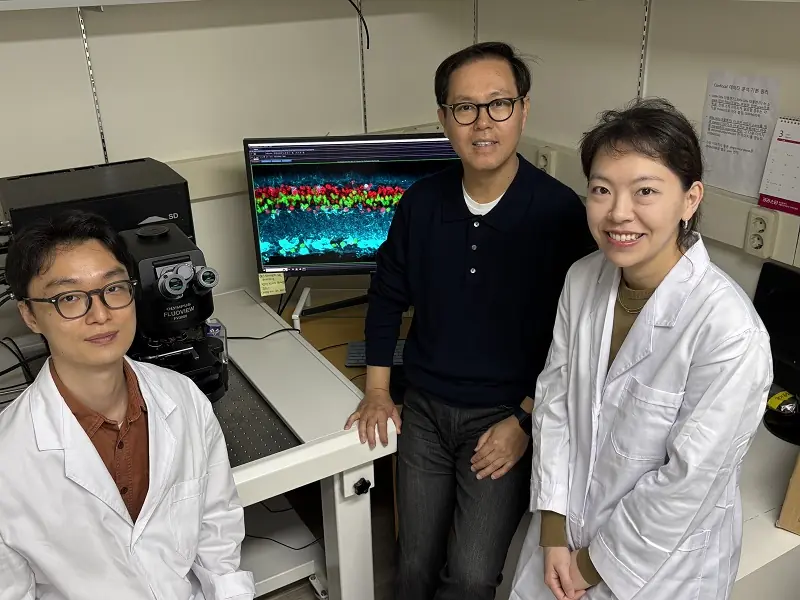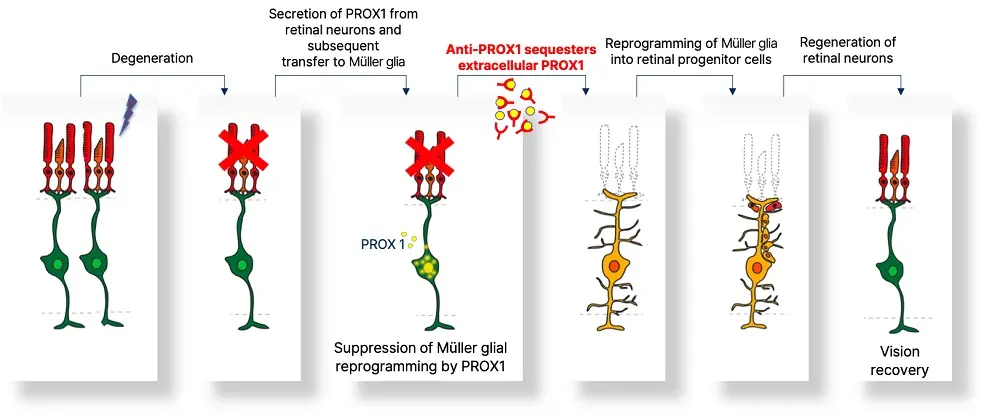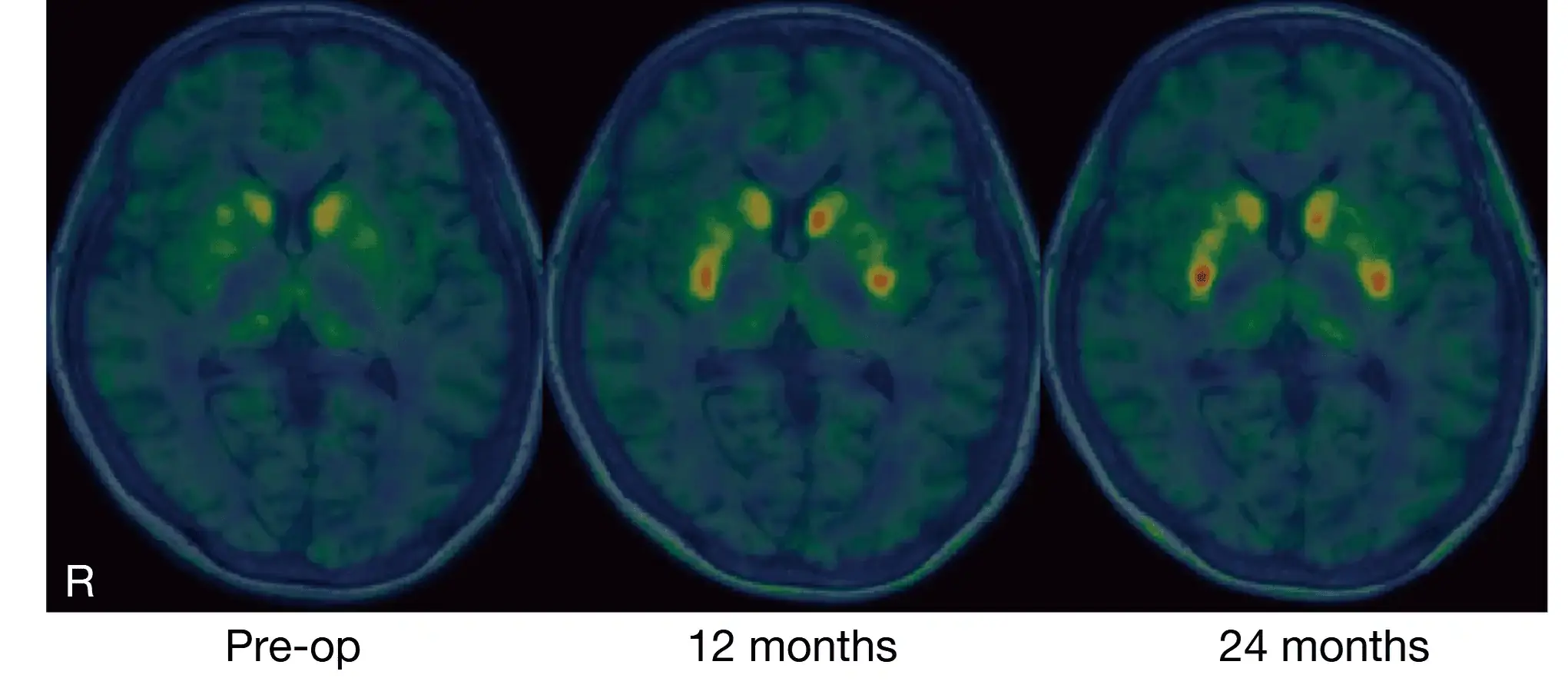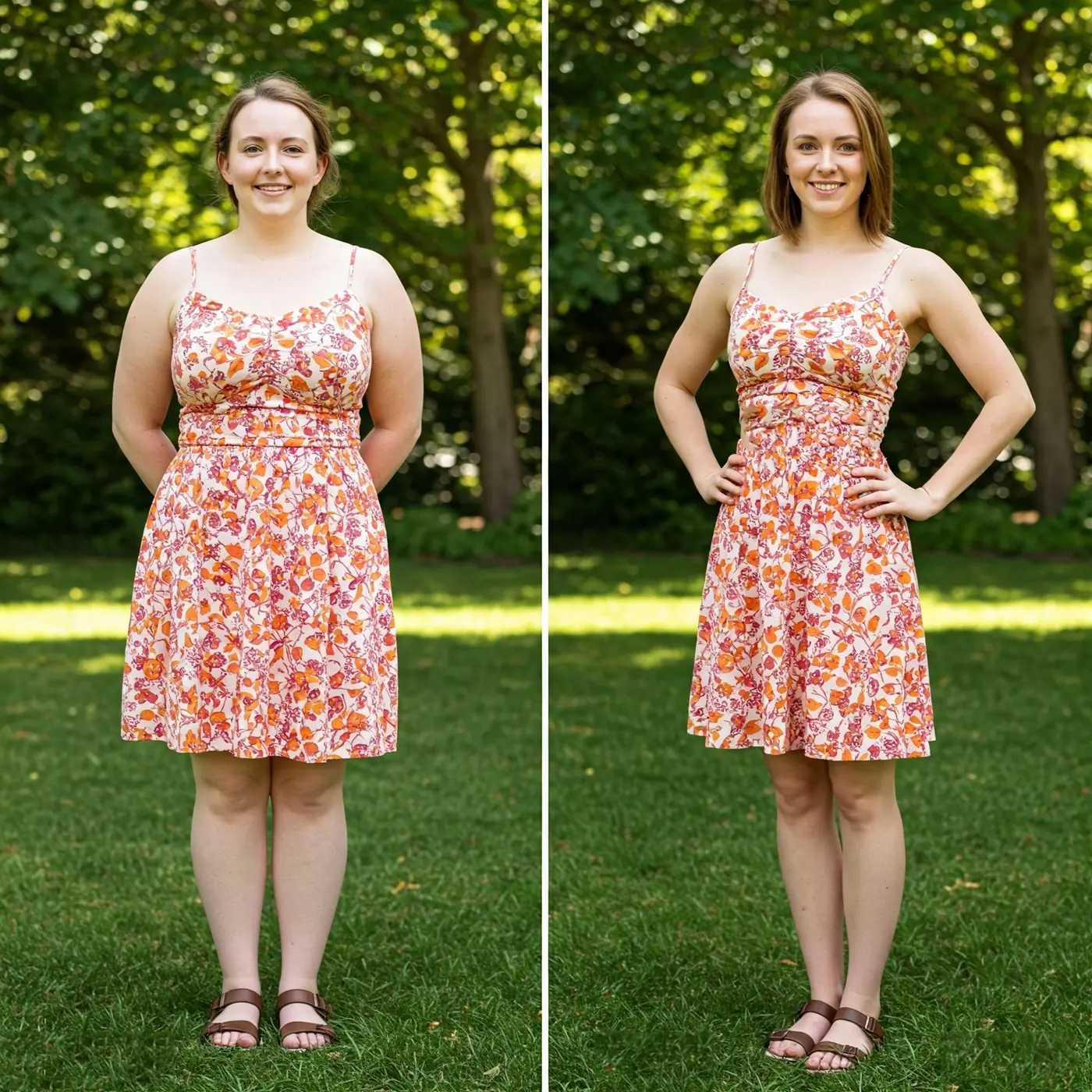
KAIST Develops Breakthrough Retinal Therapy to Restore Lost Vision
Vision is one of the most important senses in humans, and yet millions around the world suffer from vision loss due to retinal diseases. While advancements in treatments for retinal diseases have slowed disease progression, no effective therapy has been available to restore lost vision until now. Researchers from KAIST (Korea Advanced Institute of Science and Technology) have made a significant breakthrough, developing a novel drug that could restore lost vision through retinal nerve regeneration.
This pioneering research, led by Professor Jin Woo Kim from the Department of Biological Sciences at KAIST, provides new hope for patients suffering from degenerative retinal diseases like retinitis pigmentosa and macular degeneration—conditions that have long been considered untreatable. (From left) Ph.D. candidate Museong Kim, Professor Jin Woo Kim, and Dr. Eun Jung Lee of KAIST Department of Biological Sciences
(From left) Ph.D. candidate Museong Kim, Professor Jin Woo Kim, and Dr. Eun Jung Lee of KAIST Department of Biological Sciences
The Breakthrough: Restoring Vision Through Retinal Regeneration
On March 30th, KAIST announced the successful development of a treatment that restores vision through retinal nerve regeneration. The researchers focused on PROX1, a protein that suppresses retinal regeneration. By blocking PROX1, they were able to induce retinal regeneration and restore vision in disease-model mice, with effects lasting over six months.
This marks the first successful induction of long-term neural regeneration in mammalian retinas, offering a potential solution for patients who previously had no treatment options for retinal diseases.
The Problem: Why Retinal Regeneration Has Been So Difficult
As the global population ages, the number of patients with retinal diseases continues to rise. However, the primary challenge has always been the inability of mammalian retinas to regenerate once damaged. In contrast, some cold-blooded animals like fish can regenerate their retinas effectively after injury. This process in fish involves Müller glia cells dedifferentiating into retinal progenitor cells, which then generate new neurons.
In mammals, however, this regenerative process is impaired, leading to permanent damage. KAIST researchers sought to overcome this challenge by identifying the key inhibitors of retinal regeneration in mammals. Figure 1. Schematic diagram of the mechanism of retinal regeneration through inhibition of PROX1 migration. PROX1 protein secreted from retinal damaged retinal neurons transfers to Müllerglia and inhibits dedifferentiation into neural progenitor cells and neural regeneration. When PROX1 is captured outside the cells by an antibody against PROX1 and its transfer to Müllerglia is interfered, dedifferentiation of Müllerglia cells and retinal regeneration processes are resumed, restoring visual function.
Figure 1. Schematic diagram of the mechanism of retinal regeneration through inhibition of PROX1 migration. PROX1 protein secreted from retinal damaged retinal neurons transfers to Müllerglia and inhibits dedifferentiation into neural progenitor cells and neural regeneration. When PROX1 is captured outside the cells by an antibody against PROX1 and its transfer to Müllerglia is interfered, dedifferentiation of Müllerglia cells and retinal regeneration processes are resumed, restoring visual function.
The Role of PROX1 in Retinal Regeneration
Through their studies, the team identified PROX1, a protein found in neurons of the retina, hippocampus, and spinal cord, as a major inhibitor of Müller glia dedifferentiation. PROX1 suppresses neural stem cell proliferation and promotes differentiation into neurons. Interestingly, they found that in mice, PROX1 accumulates in damaged Müller glia cells, whereas it is absent in the highly regenerative Müller glia of fish.
This discovery was crucial as it suggested that eliminating extracellular PROX1 could restore Müller glia’s regenerative ability. Based on this, the researchers developed a method to neutralize PROX1 using an antibody, which was developed by Celliaz Inc., a biotech startup founded by Professor Jin Woo Kim’s research lab. Figure 2. Retinal regeneration and visual recovery in a retinitis pigmentosa model mouse through Anti-PROX1 gene therapy. After administration of adeno-associated virus expressing PROX1 neutralizing antibodies (AAV2-Anti-PROX1) to the eyes of RP1 retinitis pigmentosa model mice with vision loss, the photoreceptor cell layer of the retina is restored (A) and vision is restored (B).
Figure 2. Retinal regeneration and visual recovery in a retinitis pigmentosa model mouse through Anti-PROX1 gene therapy. After administration of adeno-associated virus expressing PROX1 neutralizing antibodies (AAV2-Anti-PROX1) to the eyes of RP1 retinitis pigmentosa model mice with vision loss, the photoreceptor cell layer of the retina is restored (A) and vision is restored (B).
The Promising Results: Restoring Vision in Mice
When the PROX1-neutralizing antibody (CLZ001) was administered to disease-model mice, it significantly promoted neural regeneration. Additionally, in a model of retinitis pigmentosa, a common inherited retinal disease, the antibody restored vision and induced sustained retinal regeneration for over six months.
This method of retinal regeneration could be revolutionary in treating degenerative retinal diseases that currently have no effective treatment options. The treatment is now being further developed by Celliaz Inc., with plans to begin clinical trials by 2028.
What’s Next: Optimizing the PROX1-Neutralizing Antibody
The researchers are now in the process of optimizing the PROX1-neutralizing antibody to prepare it for preclinical studies. Dr. Eun Jung Lee, a co-author of the study and a researcher at Celliaz Inc., explained that the goal is to offer a solution for patients at risk of blindness, especially those who currently lack appropriate treatment options.
This breakthrough represents a significant step toward restoring vision for individuals affected by retinal diseases, offering them a better chance at regaining lost sight.
Global Impact: Why This Research Matters
With retinal diseases affecting millions of people worldwide, this research could lead to a new era in the treatment of eye diseases. As Professor Jin Woo Kim emphasized, the ability to regrow retinal tissue could transform the way we approach vision loss, especially for patients with congenital or age-related retinal diseases.
In countries with aging populations, like Japan, this treatment could significantly improve the quality of life for older adults, providing a solution to those who suffer from vision loss due to age-related conditions.
Conclusion: A New Hope for Vision Restoration
KAIST’s discovery of a drug to regenerate retinal cells offers a new pathway for treating vision loss, particularly for those with degenerative retinal diseases. The development of a PROX1-neutralizing antibody is a promising innovation that could eventually lead to clinical applications for patients suffering from conditions like retinitis pigmentosa, macular degeneration, and other retinal diseases.
While further research and clinical trials are needed, this breakthrough represents a major milestone in the field of regenerative medicine and offers hope for millions of people at risk of vision loss.
Credit
This article is based on research conducted by KAIST, led by Professor Jin Woo Kim and his team. The findings were published in Nature Communications on March 26 and were co-authored by Dr. Eun Jung Lee of Celliaz Inc., and Museong Kim, a Ph.D. candidate at KAIST. For more information on the latest advancements in retinal research, visit KAIST or consult with trusted medical sources in the field of regenerative medicine.
News in the same category


36-Year-Old Teacher Passed Away From Diabetes Doctors Say Was Triggered By Everyday Foods
Diabetes is a dangerous condition with numerous complications, and diet is a key factor.

Experts issue urgent warning about terrifying hidden symptom from taking Mounjaro and Ozempic
Experts have issued an urgent warning about a symptom that can come to light from taking drugs such as Mounjaro and Ozempic.

The Benefits of Epsom Salt Foot Soak: A Natural Remedy for Foot Pain and Health
Discover the health benefits of Epsom salt foot soaks, including pain relief, exfoliation, fungal infection treatment, and more. Learn how to safely use Epsom salt for foot health.

What Causes Blue Veins? Understanding the Reasons and When to Seek Help
Blue or green veins are common, but when should you worry? Learn the possible causes of visible veins, from genetics to lifestyle factors, and when it may indicate a medical condition.

7 Early Warning Signs of Diabetes You Shouldn’t Ignore: Act Now for Better Health
Learn about 7 early warning signs of diabetes that could be easily overlooked. Early detection can help manage diabetes, prevent complications, and improve quality of life. Read on for expert insights.

Genetic Link Between Endometriosis and Autoimmune Diseases Revealed in New Study
A new study has identified a shared genetic link between endometriosis and autoimmune conditions. Women with endometriosis are at a higher risk for diseases like rheumatoid arthritis, multiple sclerosis, and psoriasis.

People Warned to See a Doctor After Sharing Photo of Concerning Dark Line on Finger
A Reddit user received warnings to see a doctor immediately after posting an image of a dark line on their finger. Learn about melanonychia and why nail discoloration can be a serious health concern.

Breakthrough in Parkinson’s Treatment: Japanese Scientists Successfully Implant Lab-Grown Brain Cells
Japanese researchers have made a groundbreaking discovery in Parkinson’s treatment using lab-grown brain cells. Early results from the clinical trial show promising improvements in movement and dopamine production.

4 Simple Steps to Cool Your Home Faster and Save on Electricity Before Turning on the Air Conditioner

3-Blade vs. 5-Blade Fans: Which Cools Better? The Truth Behind Common Misconceptions

The Alarming Rise of Bowel C@ncer in Young Adults: Is Your Diet to Blame

United Airlines Passenger Punches Gate Agent, Kn0cking Them Out

Should You Close or Leave the Toilet Lid Open After Use? 90% of People Get It Wrong — Here's Why Your Bathroom Always Smells

4 Everyday Foods That Fuel C@ncer Cells

Fatty Liver Disease: A Silent Pathway to Liver C@ncer

The Hidden Purpose of the Pocket in Women's Underwear: More Than Just a Design Feature
In actuality, the "pocket" in women's underwear is actually a gusset, which serves a number very valid purposes.

This quick 'cup of tea' test could be a simple way to spot early signs of dementia in a loved one

A doctor has revealed a simple thumb test that can uncover a "ticking time b0mb" heart condition

Avocados are incredibly healthy, if using them incorrectly in these 3 common ways could actually have adverse effects
News Post

The Woman Who Walked Away: A Journey of Self-Discovery and Empowerment
A powerful tale of self-realization as Alina breaks free from a toxic relationship, finding strength and confidence after a painful breakup. Discover how she chooses her own path towards happiness and independence.

Silent Signals: Recognizing the Subtle Symptoms of Pancreatic C@ncer

The Earring in the Passenger Seat: A Suspicious Find Leads to a Truthful Confrontation
A woman finds a sh0cking truth after discovering a mysterious child’s drawing in her fiancé’s car. Suspicion, betrayal, and secrets unravel as she confronts him, ultimately deciding the fate of their relationship.

Am I Wrong for Not Laughing at My Fiancé's "Jokes" About Calling Off Our Wedding?
A bride-to-be is questioning her relationship after her fiancé repeatedly jokes about calling off their wedding. What happens when humor crosses the line into hurtful behavior?

36-Year-Old Teacher Passed Away From Diabetes Doctors Say Was Triggered By Everyday Foods
Diabetes is a dangerous condition with numerous complications, and diet is a key factor.

Experts issue urgent warning about terrifying hidden symptom from taking Mounjaro and Ozempic
Experts have issued an urgent warning about a symptom that can come to light from taking drugs such as Mounjaro and Ozempic.

The Benefits of Epsom Salt Foot Soak: A Natural Remedy for Foot Pain and Health
Discover the health benefits of Epsom salt foot soaks, including pain relief, exfoliation, fungal infection treatment, and more. Learn how to safely use Epsom salt for foot health.

What Causes Blue Veins? Understanding the Reasons and When to Seek Help
Blue or green veins are common, but when should you worry? Learn the possible causes of visible veins, from genetics to lifestyle factors, and when it may indicate a medical condition.

DIY Rice Cream for Radiant, Youthful Skin: The Japanese Secret to Erasing Wrinkles & Fine Line
With its powerful combination of rice, almond oil, and vitamin-rich ingredients, this rice cream provides nourishment, hydration, and antioxidant protection to your skin.

7 Early Warning Signs of Diabetes You Shouldn’t Ignore: Act Now for Better Health
Learn about 7 early warning signs of diabetes that could be easily overlooked. Early detection can help manage diabetes, prevent complications, and improve quality of life. Read on for expert insights.

5 Homemade Skin Toners for Smooth, Glowing Skin: Natural Remedies for Every Skin Type
By incorporating these toners into your daily routine, you can expect healthier, brighter, and more balanced skin without the use of harsh chemicals.

Genetic Link Between Endometriosis and Autoimmune Diseases Revealed in New Study
A new study has identified a shared genetic link between endometriosis and autoimmune conditions. Women with endometriosis are at a higher risk for diseases like rheumatoid arthritis, multiple sclerosis, and psoriasis.

Roasted Onion Peel and Garlic Peel Remedies for Grey Hair: Natural Solutions for Dark, Vibrant Hair
. Roasted onion peel and garlic peel offer effective, safe, and natural alternatives that can help you combat grey hair and restore youthful vitality.

People Warned to See a Doctor After Sharing Photo of Concerning Dark Line on Finger
A Reddit user received warnings to see a doctor immediately after posting an image of a dark line on their finger. Learn about melanonychia and why nail discoloration can be a serious health concern.

Breakthrough in Parkinson’s Treatment: Japanese Scientists Successfully Implant Lab-Grown Brain Cells
Japanese researchers have made a groundbreaking discovery in Parkinson’s treatment using lab-grown brain cells. Early results from the clinical trial show promising improvements in movement and dopamine production.

4 Simple Steps to Cool Your Home Faster and Save on Electricity Before Turning on the Air Conditioner

Effective Cumin Seed Detox Tonic for Belly Fat Reduction: Your Ultimate Guide to a Flatter Midsection
The cumin seed detox tonic is a natural, easy-to-make remedy that can help accelerate belly fat loss, improve digestion, and enhance overall health.

3-Blade vs. 5-Blade Fans: Which Cools Better? The Truth Behind Common Misconceptions

The Alarming Rise of Bowel C@ncer in Young Adults: Is Your Diet to Blame
